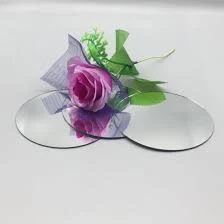

The Revolutionary Impact of Transparent Float Glass
In the world of construction and design, few materials have made as significant an impact as transparent float glass. This remarkable invention has reshaped our understanding of architecture, aesthetics, and functionality, allowing for a new era of innovation and creativity. Float glass, characterized by its smooth, flat surface and clarity, has become an essential component in a wide variety of applications, from windows and facades to decorative elements in interior design.
The Production Process of Float Glass
The term float glass refers to the method by which it is manufactured. Invented in the 1950s by Sir Alastair Pilkington, the float glass process involves floating molten glass on top of molten tin, resulting in an incredibly flat and uniform surface. This technique not only enhances the quality of the glass but also allows for large sheets to be produced efficiently. The floating process eliminates the need for grinding and polishing, thereby reducing production costs and time.
Once the glass has cooled and solidified, it is cut into desired sizes and can be subjected to various treatments to improve its properties. These treatments may include laminating for safety, coating for energy efficiency, or tinting for privacy. The versatility of transparent float glass ensures it can meet the specific needs of any project, enhancing its appeal to architects and designers.
Architectural Significance
The architectural significance of transparent float glass cannot be overstated. Its transparency allows for the seamless integration of indoor and outdoor spaces, an effect highly valued in modern design. Buildings can feature expansive glass walls, offering unparalleled views while flooding interiors with natural light. This connection to the outside encourages a sense of openness and well-being in its occupants, making spaces feel larger and more inviting.
Moreover, float glass aids in sustainable design. With advancements in low-emissivity (low-E) glass technology, architects can now capitalize on the sun's natural light while minimizing heat loss and energy consumption. This innovation contributes to reduced energy costs and a lower carbon footprint for buildings, aligning with the global push towards sustainability.

Aesthetic Appeal
From an aesthetic perspective, transparent float glass offers endless possibilities. It can be utilized in a variety of design styles, complementing both minimalist and ornate architectures. Glass balustrades, shower enclosures, and glass staircases exemplify how transparent float glass can enhance a design without compromising safety or structural integrity.
Interior designers particularly favor transparent float glass for its ability to create illusions of space and light. For instance, using glass partitions instead of solid walls can separate spaces while maintaining an open feel, making them ideal for offices and homes alike. Additionally, the reflective properties of glass can add dimension and sophistication, transforming a mundane space into a striking environment.
Challenges and Considerations
Despite its many advantages, there are challenges associated with the use of transparent float glass that designers must consider. Its fragility is a significant concern; however, advancements in glass treatment like toughening and laminating have mitigated these risks. Furthermore, while large glass surfaces can enhance aesthetics and natural light, they may lead to overheating in sunny climates unless properly managed with shading devices or treated glass solutions.
In terms of maintenance, while glass surfaces are generally easy to clean, they can show smudges and fingerprints more readily than other materials. Choosing the right glass treatment and cleaning solutions can help maintain the pristine appearance of float glass installations.
Conclusion
Transparent float glass stands as a testament to human ingenuity in material science, offering both beauty and functionality in modern design. Its unique production method, architectural significance, and aesthetic versatility make it an invaluable resource in construction and design industries. As technology continues to evolve, we can expect further innovations in float glass, enhancing its applications and solidifying its role as a staple material for the architecture of the future. With a perfect blend of form and function, transparent float glass will undoubtedly continue to shape our environments for years to come.